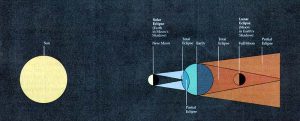
Picture this: A crab scuttles into a damp rock crevice.
Snails chug along rock faces, secretings mucus along the way.
Barnacles, glued in place, retreat into their protective shells.
An aggregation of anemone’s grab little pebbles with their tentacles. Hugging them close. All in an attempt to retain moisture and avoid desiccation — these critters all call the intertidal zone their home.
In other words, they are all reliant on the ocean’s tides: the daily rise and fall of the sea’s surface.
These organisms have all developed unique adaptations to help them deal with air exposure for several hours in a given day. Lucky for them, tides are predictable. In simple terms, tides are predicted by our understanding of the lunar cycle. The gravitational pull between the sun and the moon, and consequently its affect on the ocean, is dependent on positioning. When the moon is full, the orientation of the sun, the earth, and the moon look like this:
 They are aligned with one another. This is when gravitational pull is at its strongest and causes the oceans to bulge. Right after a full moon the difference in height between a consecutive high and low tide, called a tidal range, is at its greatest. Another phrase for this effect is called a spring tide.
They are aligned with one another. This is when gravitational pull is at its strongest and causes the oceans to bulge. Right after a full moon the difference in height between a consecutive high and low tide, called a tidal range, is at its greatest. Another phrase for this effect is called a spring tide.


